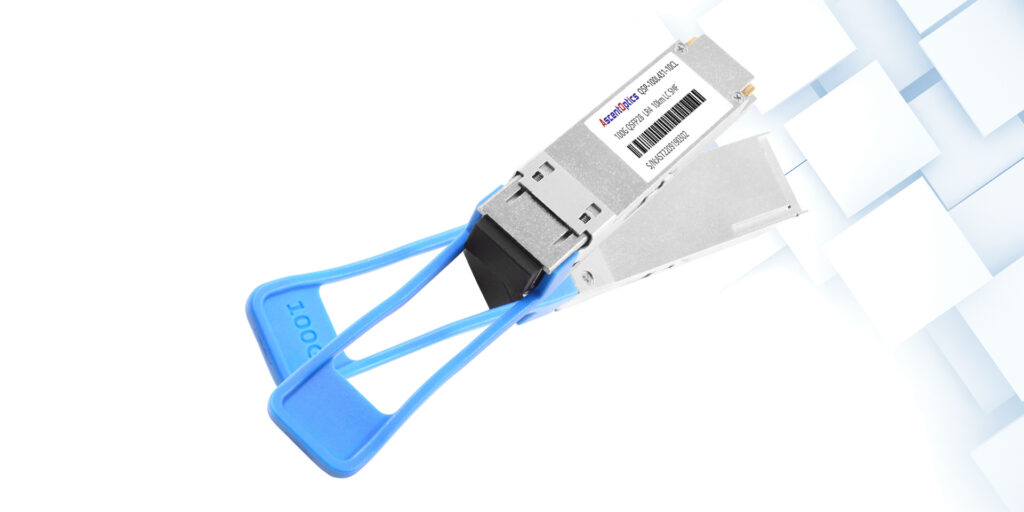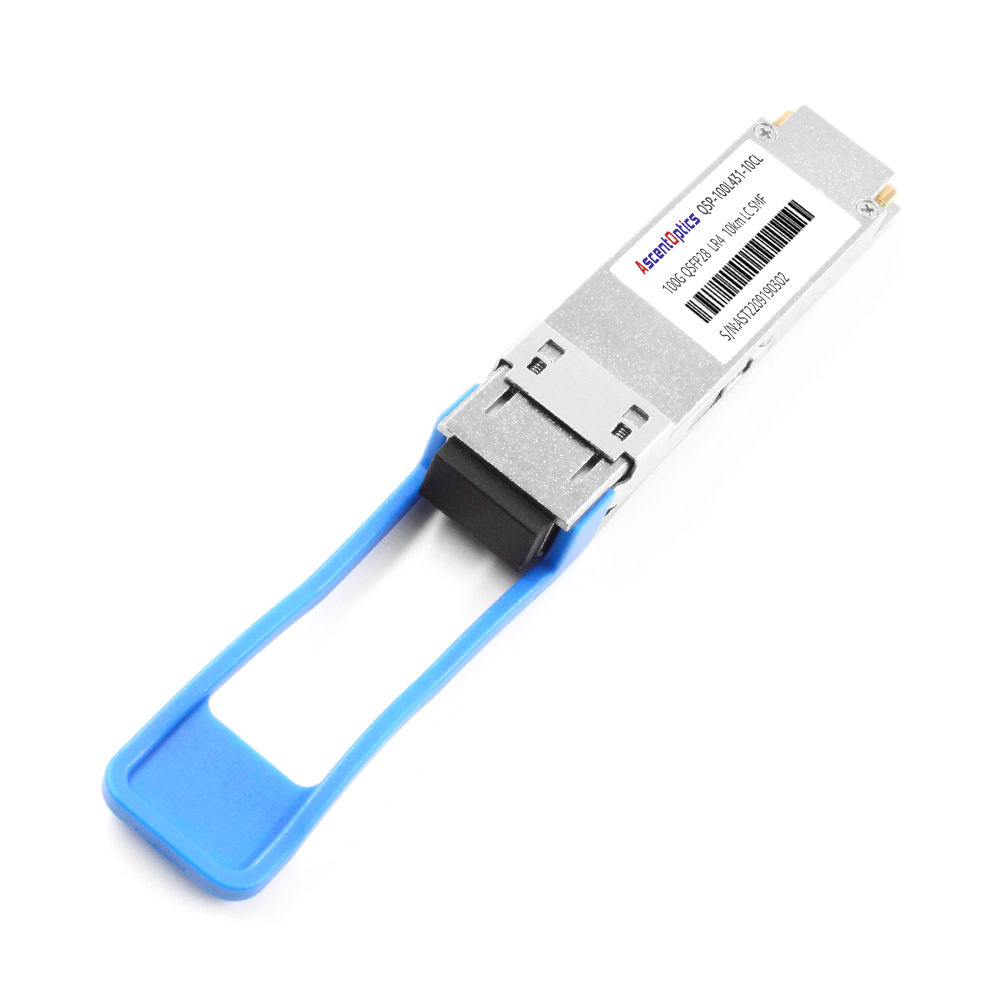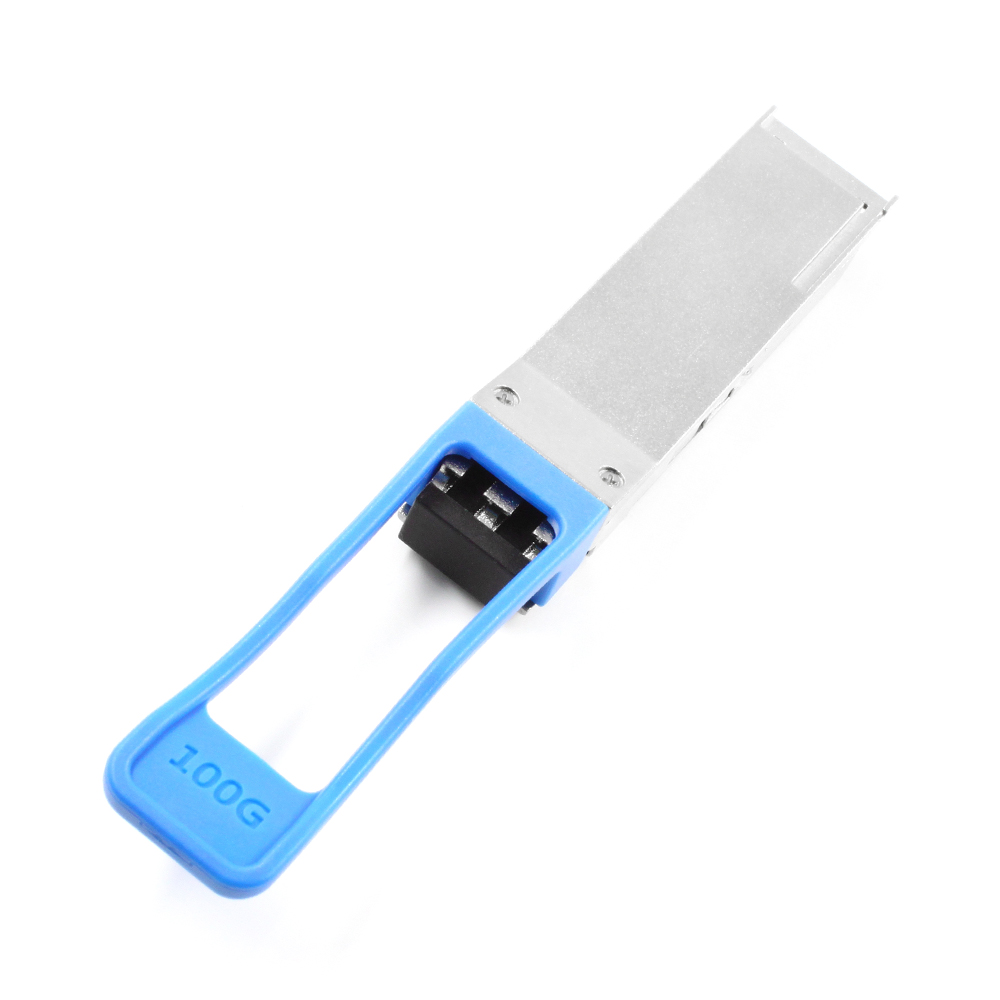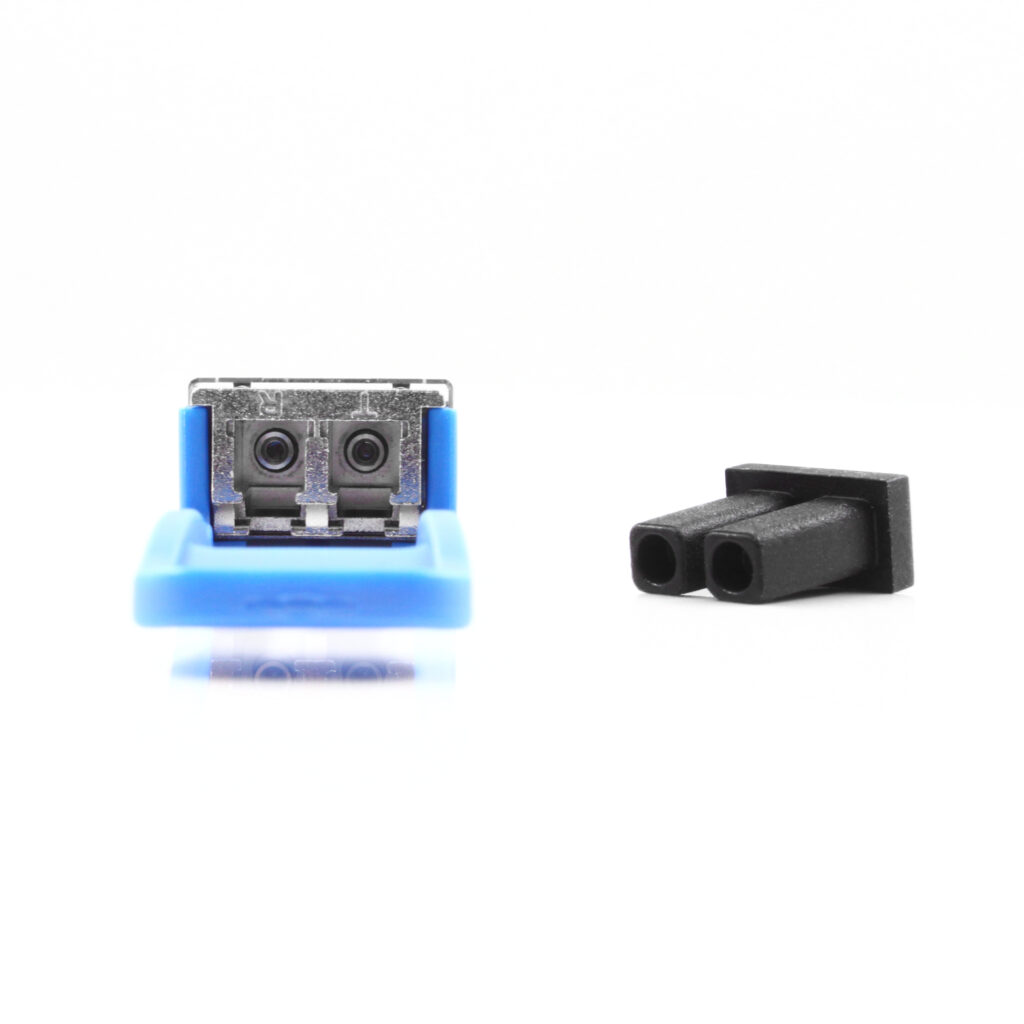
QSFP28 LR4 is an optical transceiver module that provides high-speed data communication through fiber optic cables. This device is designed to transmit and receive 100 Gigabit Ethernet (100GbE) signals and is commonly used for high-speed interconnects in data centers and telecommunication networks.
The compatibility of QSFP28 LR4 with 100G networks is a crucial aspect to consider before its usage. This optical transceiver module requires a QSFP28 port, which supports the 100G standard and operates at a wavelength of 1310nm. Additionally, QSFP28 LR4 is compatible with single-mode fiber (SMF) optic cables that offer a maximum transmission distance of up to 10 kilometers.
QSFP28 LR4 has eight LC connectors that function as the interface for fiber optic cables, enabling data transmission through individual optical channels, known as lanes. These connectors offer low insertion loss and support duplex communication, allowing bi-directional communication between the transceiver module and the network. The LC connectors allow for quick and easy installation and maintenance and prevent signal loss often associated with other connector types.
QSFP28 LR4 uses four lanes, each of which transmits a 25Gbps signal, to achieve a total bandwidth of 100Gbps. The module operates at the 1310nm wavelength, which leverages the low attenuation and high bandwidth of single-mode fiber optic cables. The LR in QSFP28 LR4 stands for Long Range, and this means that the module is designed to provide seamless data transmission over longer distances – up to 10km – without signal degradation, leading to higher reliability and quality of data transmission.
QSFP28 LR4 operates within a wavelength range of 1264nm to 1314nm. This range allows wavelength division multiplexing (WDM) technology to transmit data across four simultaneous channels. Another essential feature of QSFP28 LR4 optics is Local Area Network (LAN) WDM. This feature enables the transmission of multiple signals with different wavelengths over a single fiber optic cable, reducing the number of wires required for a network setup and improving the data transmission efficiency.
QSFP28 LR4 is a small form factor (SFF) transceiver module, which means it is compact and easy to install, designed to fit into low-profile spaces. This module complies with industry standards such as IEEE 802.3ba, SFF-8436, and SFF-8665, making it compatible with a wide range of network hardware devices such as switches, routers, and servers. Additionally, QSFP28 LR4 is subjected to stringent testing and verification procedures before release, ensuring high reliability and product performance quality.
Overall, QSFP28 LR4 is an innovative optical transceiver module designed to meet the high-speed communication needs of modern data centers and telecommunication networks. By providing fast, reliable, and efficient data transmission over longer distances and through multiple optical channels, QSFP28 LR4 is an ideal choice for high-performance networking and interconnect solutions.
Recommended Products:100G QSFP28 LR4 LWDM4 10km Transceivers

QSFP28 LR4 optical transceiver module is a highly advanced technology used for visual communication. A small optical transceiver module can efficiently send and receive optical signals over fiber optic cables. This technology is used in various applications, such as data centers, telecommunication networks, and multimedia communication systems.

One of the critical benefits of QSFP28 LR4 is its high data transmission rate. It can transmit data up to 100G at a distance of 10km. This makes it an ideal option for long-range data transmission over optical fibers. Additionally, it boasts low power consumption and is compact, making it a cost-effective solution for various applications.
The applications of QSFP28 LR4 also extend to the field of data center networking. Specifically, the Cisco QSFP-100G-LR4-S compatible 100GBASE-LR4 QSFP28 model is an excellent option for connecting switches and routers with maximum reliability and flexibility.
QSFP28 LR4 optical transceiver module is a cutting-edge technology that can transmit at rates up to 100G. It is designed to transmit four channels (or wavelengths) of 25Gbps, each with a maximum transmission distance of 10km. This makes data transmission efficient and reliable, regardless of the source and endpoint distance.
Data center networking requires high-speed and robust optic components. QSFP28 LR4 is an ideal option for data center networks, specifically the Cisco QSFP-100G-LR4-S compatible 100GBASE-LR4 QSFP28 model. This optic module supports a range of data center networks, offering flexibility and reliability when transmitting data over large distances.
IEEE 802.3ba Ethernet is a high-speed Ethernet standard that supports data rates up to 100G. QSFP28 LR4 is designed to help this standard, providing fast transmission rates while reducing power consumption and ensuring reliability. Its compatibility with other optical transceiver modules makes QSFP28 LR4 an ideal option for Ethernet networks.
QSFP28 LR4 technology offers an efficient and reliable method for optical signal transmission. This technology supports transmitting high-bandwidth signals over fiber optic cables, making it essential for applications such as data centers, telecommunications, and multimedia communication systems. Additionally, its small size and low power consumption make it a flexible, cost-effective solution for optical communication.

When it comes to Ethernet networks, choosing the suitable QSFP28 LR4 optical transceiver is crucial. QSFP28 LR4 is a high-speed optical transceiver for transmitting data at 100 Gbps over single-mode fiber. It is designed for use in data centers and other high-performance computing environments. Selecting the suitable QSFP28 LR4 optics ensures your network operates efficiently and reliably. This article will discuss the key factors to consider when selecting QSFP28 LR4 optical transceivers.
The optical wavelength is one of the most critical factors when selecting QSFP28 LR4 optics. QSFP28 LR4 uses a four-channel CWDM (Coarse Wavelength Division Multiplexing) visual interface, which transmits data over a single-mode fiber using four wavelengths. The wavelengths used are 1296.1 nm, 1300.1 nm, 1304.6 nm, and 1309.1 nm. Choosing optics compatible with these wavelengths is essential to ensure proper data transmission.
Another essential factor to consider is the data rate. QSFP28 LR4 optics support a data rate of 100 Gbps, which is critical for high-performance computing environments. When selecting optics, it is essential to ensure they can keep this data rate and are compatible with the data rate of the devices they will be connected to.
Compatibility is also a key factor to consider. QSFP28 LR4 optics must be compatible with connected devices, including switches, routers, and servers. Choosing optics designed to work with the specific devices in your network is essential to ensure that they will function properly.
Another essential consideration is Compliance with industry standards. QSFP28 LR4 optics must comply with the MSA (Multi-Source Agreement) and IEEE 802.3ba 100GBASE-LR4 standards. Choosing optics that meet these standards is essential to ensure their reliability and interoperability with other devices.
The design and form factor of QSFP28 LR4 optical modules is also essential. These optics come in a compact form factor, ideal for high-density data center applications. It is necessary to choose optics designed to fit into the specific ports of your devices that can be easily installed and removed.
Finally, interoperability and compatibility are critical factors to consider. QSFP28 LR4 optics must be interoperable with other QSFP28 LR4 optics and compatible with other devices in your network. Choosing optics designed to work with the specific devices in your network is essential to ensure their compatibility and interoperability.
In conclusion, choosing the suitable QSFP28 LR4 optical transceiver is critical for ensuring the reliability and efficiency of your Ethernet network. When selecting QSFP28 LR4 optics, it is essential to consider factors such as optical wavelength, data rate, compatibility, Compliance with industry standards, design and form factor, and interoperability and compatibility. You can select the optimal QSFP28 LR4 optics for your network by carefully evaluating these factors.
The installation and configuration process of QSFP28 LR4 optics in network environments requires careful attention to technical specifications and requirements. First and foremost, it is essential to use optic cables of up to 10 kilometers to connect QSFP28 LR4 to other network devices. The temperature range for optimal performance is between -5° to 70°C, and a stable power supply of around 3.3V is necessary. It is crucial to ensure that all requirements are met to avoid any issues with data transmission and network downtime.
Once the installation and configuration process of QSFP28 LR4 optics is complete, testing and troubleshooting for quality and reliability are essential. One way to do this is by conducting a link test to confirm that the optic is transmitting data correctly. Continuity testing and bit-error-rate (BER) analysis ensures data transmission is not disrupted. Various troubleshooting methods can be employed for issues, such as checking cable connections, swapping transceivers, and adjusting network device parameters.
Cleaning and maintaining QSFP28 LR4 optics regularly is essential to maintain optimal performance. Dust and other residues on the optic’s surface can impact its performance, so cleaning with a dry, lint-free cloth or compressed air is recommended. Inspecting the optic’s connectors and cable ends for damage or dirt should also be done, and any issues found should be addressed promptly.
As technology evolves, the need to replace or upgrade QSFP28 LR4 optical transceivers arises. When returning, it’s essential to ensure the new optical transceiver is compatible with other network devices and meets all necessary specifications. Additionally, upgrading to QSFP28 LR4 optics with higher capacity can improve network performance and efficiency.
To maximize the lifespan and performance of QSFP28 LR4 optics, following the manufacturer’s installation, testing, and maintenance guidelines is essential. Additionally, monitoring the optics’ performance regularly is vital to detect any issues before they become significant problems. A proactive approach that includes regular cleaning, testing, and troubleshooting increases the lifespan and performance of QSFP28 LR4 optics, resulting in a more reliable and efficient network environment.

A: The function of a 100g QSFP28 LR4 optical transceiver is to provide 100G Ethernet connectivity in optical communication applications.
A: LR4 optical transceiver is a module that converts electrical signals into optical signals and then multiplexes them into four channels at 1310nm for transmission over single-mode fiber (SMF) up to 10km.
A: QSFP28 is a form factor and refers to a transceiver module that supports 100Gbps Ethernet. QSFP28 LR4 optical transceiver, on the other hand, is a type of transceiver module that uses four wavelengths over single-mode fiber for an extended transmission range of up to 10km.
A: 100G QSFP28 LR4 optical transceivers are compatible with Cisco switches that support 100G Ethernet.
A: The maximum transmission distance of a QSFP28 LR4 optical transceiver is up to 10km over single-mode fiber.
A: A QSFP28 LR4 optical transceiver uses duplex LC connectors.
A: A QSFP28 LR4 optical transceiver uses four channels at 1310nm wavelength for transmission over single-mode fiber up to 10km.
A: The QSFP28 MSA standard is a multi-source agreement that defines electrical and mechanical specifications for QSFP28 optical transceiver modules.
A: The power consumption of a QSFP28 LR4 optical transceiver is typically between 3.5W to 4W.